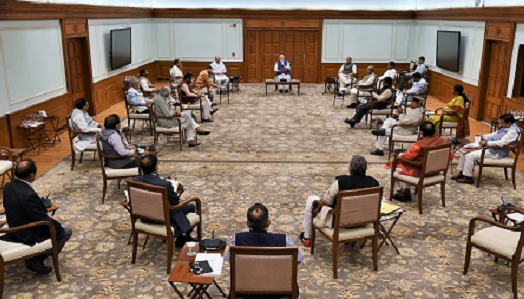A study by international medical journal Lancet reveals, physical distancing in Wuhan by closing schools and workplaces helped reduce the number of COVID19 cases.
New Delhi (ISJ): A day after Indian Prime Minister Narendra Modi announced a nationwide lockdown, international medical journal Lancet released a modelling study, confirming physical distancing in Wuhan, China has considerably helped reduce the number of COVID19 cases.
“The analysis of happenings in all these countries since the last two months, and the opinion of experts has proved that there is only one way to effectively deal with Coronavirus – Social Distancing,” said Modi in a televised address on Tuesday (24 March).
The mathematical modelling research published in The Lancet Public Health revealed that maintaining restrictions in Wuhan would delay the second peak of COVID19 outbreak to October, relieving pressure on health services in the intervening months.
The authors of the study, however cautioned that given the large uncertainties around estimates of the reproduction number (how many people an individual with the virus is likely to infect), and how long a person is infected on average, the true impact of relaxing physical distancing measures on the ongoing COVID-19 epidemic could not be precisely predicted.
“The unprecedented measures the city of Wuhan has put in place to reduce social contacts in school and the workplace have helped to control the outbreak”, says Dr Kiesha Prem from the London School of Hygiene & Tropical Medicine, UK, who led the research.
“However, the city now needs to be really careful to avoid prematurely lifting physical distancing measures, because that could lead to an earlier secondary peak in cases. But if they relax the restrictions gradually, this is likely to both delay and flatten the peak,” Dr Prem added.
In December 2019, a novel coronavirus (SARS-CoV-2) emerged in Wuhan, China. In mid-January 2020, schools and workplace were closed as part of New Year holidays. These closures were then extended to reduce person-to-person contact and prevent the spread of SARS-CoV-2.
In the study, researchers developed a transmission model to quantify the impact of school and workplace closures using information about how often people of different ages mix with each other in different locations, and to assess their effects on bringing the outbreak under control.
Using the latest data on the spread of COVID-19 in Wuhan and from the rest of China on the number of contacts per day by age group at school and work, they compared the effect of three scenarios: no interventions and no holidays (a hypothetical scenario); no physical distancing measures but school winter school break and Lunar New Year holidays as normal; and intense control measures with school closed and only about 10 percent of the workforce—e.g., health-care personnel, police, and other essential government staff—working during the control measures (as started in Wuhan in mid-January). They also modelled the impact of lifting control measures in a staggered way, and during different stages of the outbreak (in March and April).
The analyses suggest the normal school winter break and Lunar New Year holidays would have had little impact on the progression of the outbreak had schools and workplaces opened as usual. However, putting extreme measures in place to reduce contacts at school and workplaces, could reduce case numbers and the size of the epidemic peak, whilst also delaying the peak.
The effects of these distancing measures seem to vary by age, with the greatest reductions in new cases among school children and the elderly, and lowest among working-aged adults. However, once these interventions are relaxed, case numbers are expected to rise.
The analysis further suggests physical distancing measures are likely to be most effective if the staggered return to work commences at the beginning of April—potentially reducing the median number of new infections by 24 percent up to the end of 2020, and delaying a second peak until October.
“Our results won’t look exactly the same in another country, because the population structure and the way people mix will be different. But we think one thing probably applies everywhere: physical distancing measures are very useful, and we need to carefully adjust their lifting to avoid subsequent waves of infection when workers and school children return to their normal routine. If those waves come too quickly, that could overwhelm health systems”, said co-author Dr Yang Liu from London School of Hygiene & Tropical Medicine.
Despite these important findings, the study has some limitations, including that it assumed no difference in susceptibility between children, and that the extreme distancing measures used in Wuhan might have increased the transmission within households. Finally, the model did not capture individual-level differences in contact rates, which could be important in super-spreading events, particularly early on in an epidemic.


